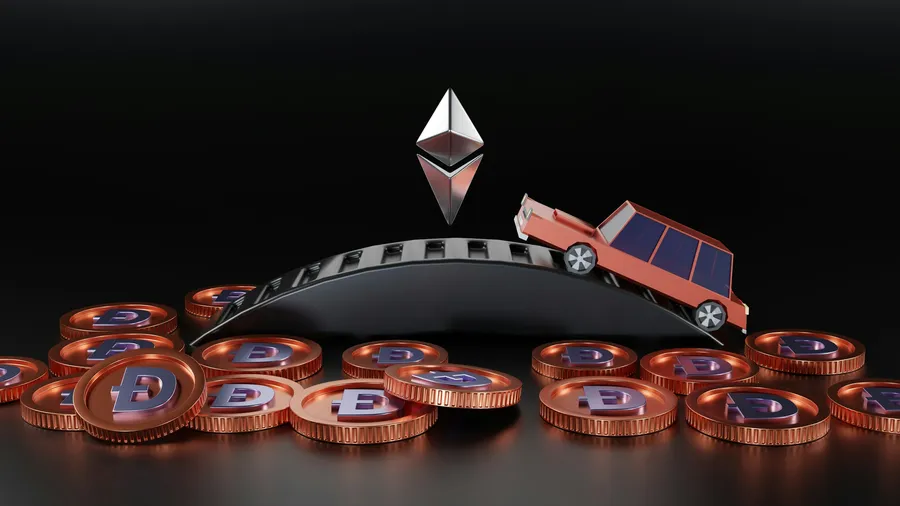What is Enjin Coin (ENJ) Cryptocurrency Token? — Enjin, Gaming NFTs, Blockchain

Title: Enjin Coin (ENJ): A Deep Dive into the Gaming NFT Craze and Beyond
Subheading: Unmasking the Truth Behind Enjin’s Crypto Token
If you’re here, chances are you’ve heard about Enjin Coin or ENJ, the token powering Enjin’s gaming-focused blockchain. Or maybe you just got scammed by another NFT phony peddling “Enjin-backed” digital garbage. Either way, grab your hard hats and buckle up – we’re about to pull back the veil on this cryptocurrency frenzy.
What is Enjin Coin (ENJ) & Why Does It Exist?
Enjin Coin, a utility token born in 2017, was designed to fuel an ecosystem of gaming-related NFTs on the Ethereum blockchain. Think of ENJ as digital Play-Doh for developers to create and trade virtual items. Enjin’s promise? A secure platform that reduces fraud risk while enhancing the ownership experience of gamers with their in-game assets.
Now, don’t get me wrong. There are valid use cases here – allowing players to truly own and trade assets is undeniably appealing. But as a security expert who’s seen more hacks than Hollywood scriptwriters, I must say, there’s also an elephant (or rather, a Kraken) in the room: risk.
The Upside: Enjin NFTs & Gaming
Enjin’s platform has indeed given birth to some innovative projects and games. For example, let’s look at the blockchain-based game Axie Infinity. It uses Enjin’s tech for its in-game economy, where players can buy, sell, or trade virtual pets called Axies with ENJ tokens.
Another shining example is Ethernal, a collectible card game on Ethereum that leverages Enjin’s technology to create digital assets backed by ENJ coins. These NFTs guarantee authenticity and rarity, thereby adding value to the in-game experience.
But Wait…The Downside: Security Risks & Buggy Smart Contracts
While blockchain tech promises security, it doesn’t mean bugs or vulnerabilities don’t exist – far from it! Remember the infamous Parity Multi-Sig Wallet Hack of 2017, where over $30M in ETH and tokens were stolen due to a bug? That could happen with ENJ too.
Let’s also not forget the infamous ‘Rugpull’ incident involving CryptoKitties – an early adopter of Enjin’s tech for its digital collectibles. When the game lost steam, developers effectively pulled the rug from under players, leaving them with worthless assets backed by…you guessed it, ENJ tokens.
Real-World Lessons: Key Leaks and NFT Scams
Remember, folks, if something seems too good to be true, it probably is. Last year, scammers impersonated Enjin representatives to defraud victims of over $1M in ENJ tokens via fake airdrops. How did they do this? By using similar-sounding domain names and tricking users into entering their wallet seed phrases or private keys – a classic social engineering attack.
Then there’s the infamous key leak that happened earlier this year, which saw 341 million ENJ tokens (around $10M at the time) accidentally released due to a bug in one of Enjin’s smart contracts. This caused ENJ prices to plummet and raised serious questions about the stability of the platform.
The Verdict: Is Enjin Coin Worthy of Your Trust?
Well, that depends on your risk tolerance and belief in the future of blockchain gaming. As a security expert, I’ll say this: while ENJ holds potential, it’s not without its challenges. The platform has demonstrated vulnerability to exploits and bugs. Furthermore, the NFT market is still largely unregulated, which opens up opportunities for fraudsters looking to part unsuspecting users from their hard-earned ENJ tokens.
In conclusion, while Enjin Coin might be the digital ‘Play-Doh’ of gaming, remember that it’s not completely impervious to breakage. As always in crypto, proceed with caution – and maybe a pinch of salt.
Remember, kids, no one can guarantee you won’t get scammed or lose your tokens. That’s part of the wild West world of cryptocurrencies. But armed with knowledge and healthy skepticism, you’re better prepared for the adventure ahead.









